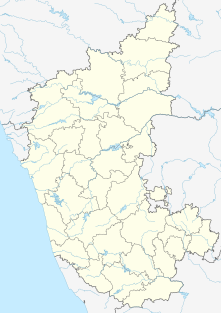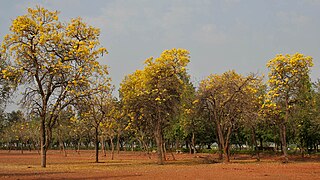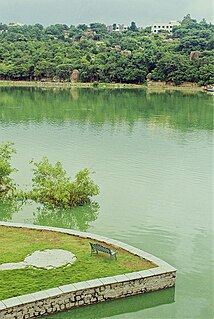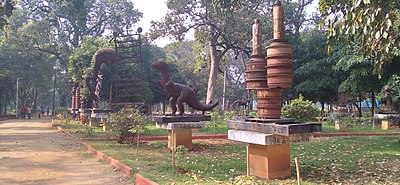
Hyderabad is the capital and largest city of the Indian state of Telangana and the de jure capital of Andhra Pradesh. It occupies 650 square kilometres (250 sq mi) on the Deccan Plateau along the banks of the Musi River, in the northern part of South India. With an average altitude of 542 metres (1,778 ft), much of Hyderabad is situated on hilly terrain around artificial lakes, including the Hussain Sagar lake, predating the city's founding, in the north of the city centre. According to the 2011 Census of India, Hyderabad is the fourth-most populous city in India with a population of 6.9 million residents within the city limits, and has a population of 9.7 million residents in the metropolitan region, making it the sixth-most populous metropolitan area in India. With an output of US$74 billion, Hyderabad has the fifth-largest urban economy in India.

Ooty, officially known as Udagamandalam, is a town and a municipality in the Nilgiris district of the Indian state of Tamil Nadu. It is located 86 km north of Coimbatore and 128 km south of Mysore and is the headquarters of the Nilgiris district. It is a popular hill station located in the Nilgiri Hills. Local residents call it Queen of Hills. It was the summer capital of Madras Presidency.

Mysore, officially Mysuru, is a city in the southern part of the state of Karnataka, India. Mysore city is geographically located between 12° 18′ 26″ north latitude and 76° 38′ 59″ east longitude. It is located at an altitude of 770 m (2,530 ft) above mean sea level.

The All India Majlis-e-Ittehad-ul-Muslimeen is an Indian political party claiming to promote the social, economical, and educational development and effective representation of Muslims, Dalits, other minorities and underprivileged communities in India, based in the Indian state of Telangana, with its head office in the Aghapura, Hyderabad, which has its roots in the Majlis-e-Ittehadul Muslimeen.

Jyoti Basu was an Indian politician who served as the Chief Minister of West Bengal state from 1977 to 2000. He was one of the co-founders of the Communist Party of India (Marxist) and a member of the Polit Bureau of the party since its inception in 1964 till 2008. He was noted to have been the longest serving chief minister in an elected democracy, at the time of his resignation.

Osman Sagar is a reservoir in the Indian city of Hyderabad. The lake is around 46 km², and the reservoir is around 29 km², with total level of 1,790 feet and a capacity of 3.9 tmc ft.

Jagjivan Ram, known popularly as Babuji, was an Indian independence activist and politician from Bihar. He was instrumental in the foundation of the All India Depressed Classes League, an organisation dedicated to attaining equality for untouchables, in 1935 and was elected to Bihar Legislative Assembly in 1937, after which he organised the rural labour movement.

NTR Gardens is a small public, urban park of 36 acres adjacent to Hussain Sagar lake in Hyderabad, India. Constructed in several phases since 1999, the area that is predominantly a park is geographically located in the centre of the city, and is close to other tourist attractions such as Birla Mandir, Necklace Road and Lumbini Park. It is maintained by the Buddha Purnima Project Authority that functions under the directives of the Government of Telangana.

Nagarjuna Sagar Dam is a masonry dam across the Krishna River at Nagarjuna Sagar which straddles the border between Guntur district in Andhra Pradesh and Nalgonda district in Telangana.

Sanjeevaiah Park is a public greenspace and park in the heart of Hyderabad, India. Built on 92 acres (37 ha) along the banks of Hussain Sagar lake, the park is named after Damodaram Sanjivayya, an erstwhile Chief Minister of Andhra Pradesh. The park is managed by the Hyderabad Metropolitan Development Authority. The park won the Best Open Landscape Award during the 2010 Indian National Trust for Art and Cultural Heritage award presentations. The park also houses the second tallest Indian Flag.

Hyderabad is located in central Telangana and is spread over an area of 2,500 km2. The city lies in the Deccan Plateau and rises to an average height of 536 m above the sea level. The city lies at 17.366° N latitude and 78.476° E longitude.

Public Gardens also known as Bagh-e-Aam is a historic park located in the heart of the city of Hyderabad, India. It was built in 1846 by the Nizam of Hyderabad and is the oldest park in Hyderabad.

Domalguda is a locality in Hyderabad, India. It lies along the southern part of Hussain Sagar, just south of Indira Park. Hindu religious monastic order Ramakrishna Math and Andhra Vidyalaya College occupy nearly half of the neighborhood. The Nizam (Bharat) Scouts and Guides is also located in Domalguda.

Musheerabad is a commercial center in Hyderabad, India. Musheerabad comes under central zone and ninth circle of Hyderabad, and falls under the Secunderabad revenue division. Nawab Bahadur Yar Jung, one of the founding members of All India Majlis-e-Ittehadul Muslimeen, is buried in Musheerabad.
Member of legislative Assembly(MLA) :- Muta Gopal (TRS)

Snow World is an amusement park located in Hyderabad, Telangana, India within an area of about 2 acres (0.81 ha). Located beside Indira Park and along the Hussain Sagar lake, the park was inaugurated on 28 January 2004.

Durgam Cheruvu also known as Raidurgam Cheruvu is a freshwater lake located in Rangareddy district, Telangana, India. The lake, which is spread over 83 acres (34 ha), is located near the city of Hyderabad. The lake is also known as Secret Lake because it is hidden between the localities of Jubilee Hills and Madhapur. The Durgam Cheruvu Bridge which traverses the lake is inaugurated in September 2020.

Saroornagar Lake is a lake in Hyderabad, India. From the year of its creation in 1626, the lake remained largely clean until 1956 when Hyderabad expanded. Spread over 99 acres (40 ha), the lake was restored by the Hyderabad Urban Development Authority in 2003–04 at a cost of ₹200 million (US$2.8 million). After the restoration of the lake, migratory birds returned to the lake in big numbers a few years later.

Hussain Sagar is a heart-shaped lake in Hyderabad, Telangana, built by Ibrahim Quli Qutb Shah in 1563. It is spread across an area of 5.7 square kilometres (2.2 sq mi) and is fed by the River Musi. A large monolithic statue of the Gautama Buddha, erected in 1992, stands on Gibraltar Rock in the middle of the lake. It also separates the city centre of Hyderabad from its neighborhood Secunderabad. The maximum depth of the lake is 32 feet (9.8 m).
As of 2019, there are 632 parks in Chennai City, including 142 parks in the north zone, 224 in the central zone, and 266 in the south zone. They range in size from 700 square metres to 5,000 square metres. A couple of the parks, including the Anna Nagar Tower Park, are spread across acres. In 2018, the city's green cover was estimated to be 14.9 percent, up from an estimated 4.5 percent in 2011. The per capita green cover of the city has been estimated at 8.5 square meters, as against the World Health Organization recommendation of 9 square meters of green cover per capita in cities. The city lost around 100,000 trees in December 2016 because of Cyclone Vardah. As of 2018, the city's tree cover is estimated to be around 64.06 sq km. This is just over 15 percent of the entire city. The most dominant species of trees in the city are copper pod, Indian beech, neem, gulmohar, raintree, and tropical almond. The overall extent of open space in the city is 34.58 km2. In all, the city has 121 species of trees belonging to 94 genera and 42 families. Teynampet zone remains the most diverse with 68 species, and Manali zone with just 38 species is the least. With 51 parks, Adyar remains the zone with the highest number of parks in the city, and Tiruvottiyur zone scores the least with only 4 parks. The share of Chennai's greenspace is dominated by the Guindy National Park, with an area of 2.71 sq km, which covers a vast area south of the Adyar River.























